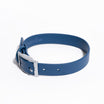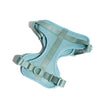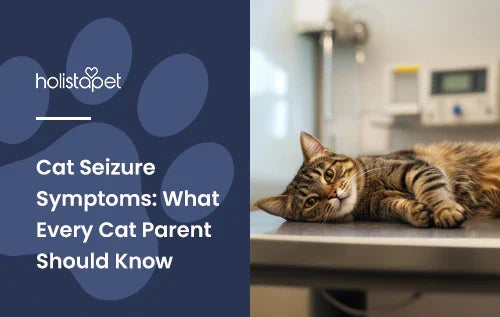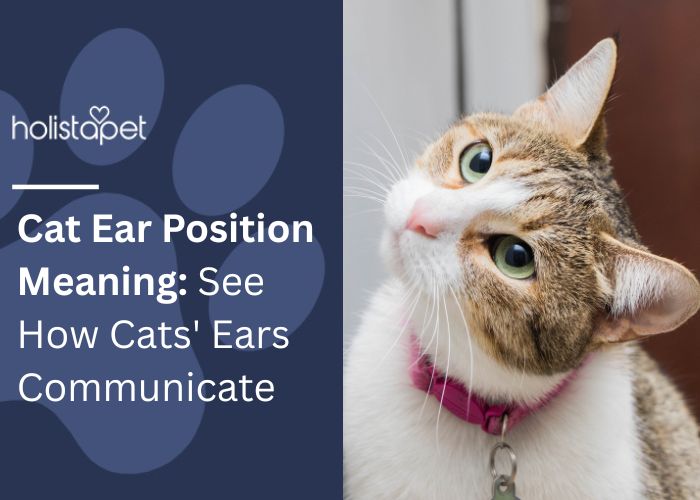If your feline friend suddenly starts twitching, staring into space, or acting out of it, you might be witnessing symptoms of a cat seizure. It's as scary as it sounds and enough to make any cat owner freak out.
But knowing what to watch for can save your kitty. So, let's break down the signs, the sounds, and the strange moves your companion might show during an episode. It's time to learn what's normal and what's not.
What Is a Seizure in Cats?

A feline seizure happens when the brain fires off a sudden surge of electrical activity. This can cause some odd things to happen, like twitching, zoning out, full-body shaking, and possibly unconsciousness. It's not just one type of scenario, either. Seizures can show up in all kinds of ways.
They can stem from intracranial causes like head trauma and brain tumors, or metabolic problems like low blood sugar. Even high blood pressure, feline leukemia, and infectious diseases can cause an episode. Some viral illnesses, like feline infectious peritonitis, may also be linked to seizure activity in rare cases. Some cats are born with seizure disorders, like idiopathic epilepsy, where the exact cause is a mystery.
How Common Are Seizures in Cats?
Seizures in cats aren't extremely common, but they're not rare either. A seizure event can happen just once, or it can keep coming back as recurrent seizures.
Older felines and those with underlying diseases like liver disease, kidney disease, and brain trauma may be more at risk. Some kitties have primary epilepsy that starts when they're younger.
Recognizing Early Warning Signs Before a Seizure
Some affected cats send out little red flags before things go sideways. Catching these early clues can help you act fast and maybe even prevent seizures from getting worse:
- Sudden Restlessness or Agitation. Your chill cat suddenly can't sit still. That nervous energy might be a warning.
- Hiding or Seeking Isolation. If your social butterfly turns into a loner, something's up.
- Unusual Vocalizations or Pacing. Yowling, crying, or pacing like they've got ants in their pants could be a pre-seizure sign.
- Unresponsiveness, Confusion, or Disorientation. If your cat seems spaced out, stares through you, or looks lost, don't brush it off.
Physical Symptoms During a Seizure Episode
When a seizure hits, your cat might go from zero to full-blown twitch-fest in seconds. These episodes can look intense, but knowing the signs can help you stay calm and keep your kitty safe.
Your cat's symptoms might include uncontrollable muscle activity, jerky movements, or stiffness throughout the entire body. Some felines lose urinary control, drool like crazy, or paddle their limbs like they're swimming mid-air. Others might just stare off or make strange sounds.
No two epileptic seizures look exactly the same, but the chaos is real. Let's take a closer look at each of the warning signs.
Muscle Twitching or Jerking Movements
Your cat's muscles might start twitching, shaking, or jerking all over the place. It can be just a leg or their whole body doing the shaky dance. It's sudden, fast, and totally out of their control. These jerky moves are often the first big clue that something's seriously wrong. If it happens more than once, your cat might be dealing with a seizure disorder.
Drooling, Foaming, or Mouth Chattering

We're talking streams of saliva, foamy bubbles, and weird mouth noises. These mouth-related signs usually show up during a seizure or right before one. Some cats start chattering their teeth or smacking their lips. It might look like your cat is gagging or chewing air, but it's actually the body misfiring signals to the jaw.
Collapsing or Losing Consciousness
Collapsing during a seizure can look dramatic and scary, especially if your cat loses consciousness completely. Their body might go limp, or it might stiffen up like a board.
If this is your cat's first seizure, immediately note all the details and share them with your vet. Even a single seizure like this deserves a call to your vet for urgent treatment, especially if it progresses into status epilepticus, a nonstop, life-threatening seizure.
Rigid or Stiff Body Posture
Think stiff legs, tight muscles, and frozen like they're stuck mid-pounce. That rigid posture can last a few seconds or stretch into a minute or two. Your cat's body locks up from a sudden burst of electrical activity in the brain. It's often paired with other signs like twitching or collapsing. If your kitty freezes up like this, they're likely experiencing a seizure episode.
Paddling of the Limbs
During a seizure, a cat may lay on their side and move their legs in a rapid, running motion. That's paddling. It's their brain misfiring, sending signals like they're in motion. These repetitive, jerky limb movements usually mean the seizure has taken over their motor control. If you see this, step back and give them space until it stops.
Loss of Bladder or Bowel Control
Yep, we're talking bladder or bowel accidents. It's messy, but it's not something they can help. Their body's just not getting the right signals during the seizure.
After the episode ends, you might notice a wet spot or a surprise pile. This is a common part of seizure activity, especially in more intense cases like generalized seizures. Clean it up, stay calm, and note what happened for the vet.
Dilated Pupils or Eye Flickering (Nystagmus)

Dilated pupils or nystagmus are major signs that something funky is going on in the brain. These eye changes can happen right before, during, or even after a seizure. It might look like your cat's tracking invisible bugs or staring into space. But what's really happening is a mix-up in their brain signals. Eye flickering is more than just weird; it's a red flag for seizure activity.
Involuntary Vocalizations
Your cat suddenly yowls, cries, or lets out a weird, drawn-out meow mid-episode. These sounds aren't something your cat is choosing to make. They're involuntary and often sound distressed or out of place.
Some cats get loud before the shaking starts, while others vocalize right in the middle of it. It's their brain firing signals in all the wrong places. If your cat makes these strange noises without any clear reason, especially during other symptoms, take note.
Head Tilting or Sudden Head Movements
Sudden head movements can be a sign of a seizure or a sign that one's about to begin. It might look like your cat's reacting to something you can't see, but it's internal.
Some cats tilt their head sharply to one side, while others do repeated twitchy motions. It's not always dramatic, but it's definitely strange. If you see this along with other signs, your cat could be dealing with focal seizures.
Behavioral Changes That May Signal a Seizure
Some seizure symptoms are in the attitude. Your cat might act oddly or not like their usual sassy self. These behavior changes can show up minutes or even hours before an episode kicks in.
You might notice your cat staring at nothing, acting spooked, or straight-up ignoring you. They could seem zoned out or super confused. These shifts aren't just a mood. They're signals that something in the brain isn't firing right.
Unresponsiveness or Staring Into Space
If your cat zones out and won't respond to your voice or movement, it could be a mini seizure. Staring into space with zero reaction is one of the quieter signs, but it still matters.
This kind of blank stare usually shows up during absence seizures or in the moments right before a bigger episode. It's like their brain hits pause for a second. If your kitty goes into statue mode and doesn't snap out of it quickly, report it to your vet for proper seizure treatment.
Confusion or Disorientation After the Episode
Once the seizure ends, your cat may look totally lost, wander around, bump into stuff, and act scared. This dazed state is part of the post-seizure recovery phase, and it's common.
They might not recognize you at first or seem unsure of where they are. It's like their brain needs a minute (or a few) to reboot. This confusion can last a few hours or just a few minutes, depending on the seizure type and intensity.
Temporary Blindness or Unusual Aggression
After a seizure, some cats act like they can't see you even if you're right in front of their face. Temporary blindness can leave them bumping into walls or staring past you.
Other felines might go from sweet to spicy with sudden aggression because they're disoriented and scared. We're talking hissing, swatting, and lashing out without warning. If your cat shows these signs post-seizure, give them space and track how long it lasts.
Types of Seizures Seen in Cats
Knowing the different types of feline seizures can help you spot what's going on and talk to your vet like a pro. Here's the breakdown of what might be happening:
- Generalized (Grand Mal) Seizures. These involve the entire body. Your cat may collapse, shake, drool, or lose bladder control. They often include uncontrollable muscle activity and can last several seconds to a few minutes. These seizures are usually the most noticeable and can be medical emergencies if they repeat or last too long since they can lead to further brain damage.
- Focal (Partial) Seizures. These start in one part of the brain and usually affect just one body part or behavior, like twitching or head tilts. You might see facial spasms, ear flicking, or odd repetitive motions.
- Absence or Petit Mal Seizures. Quick blank stares or zoning out. Your cat might freeze mid-step or stop responding for a few seconds before returning to normal. These seizures are subtle but can happen repeatedly throughout the day without anyone noticing.
The Importance of Contacting the Vet for All Seizure Types
No matter the size or type, every seizure deserves a vet's attention. Even a quick stare-off or one-time muscle twitch could point to something serious under the surface.
Your vet can run blood tests, urine tests, and other diagnostics to figure out what's going on. They can check for metabolic diseases, prescribe anticonvulsant medication, and rule out brain infections or tumors. Getting answers early helps prevent repeated seizures or worse.
What Happens After a Cat Seizure?

What comes next is the postictal phase. It's basically the brain trying to reboot. During this time, your kitty may act strange, tired, or downright out of it.
- Post-Seizure Disorientation (Postictal Phase). Your cat might stumble, look confused, or hide. This can last a few minutes or a few hours.
- Signs of Fatigue or Temporary Behavioral Shifts. Most cats will need extra sleep, exhibit mood swings, and show clinginess. This is part of the recovery process. Just keep them comfy and quiet.
When to Document Seizure Activity
Tracking your feline companion's seizure episodes helps your vet figure out what's going on. The more info you have, the better your cat's treatment plan will be. Think of yourself as the feline seizure detective.
- Tracking Duration, Frequency, and Symptoms. Write down how long the seizure lasted, what it looked like, and how often it happens.
- Noting Unusual Patterns or Triggers. Did it happen after exposure to dog flea and tick medication, a loud noise, or a stressful moment? These clues can reveal the underlying cause.
Final Thoughts – Spotting Cat Seizure Symptoms Quickly
Feline seizure symptoms might be subtle or super dramatic. Either way, catching them early can make a huge difference in your cat's life. The faster you spot the signs, the faster you can get your kitty the help they need.
Don't play the guessing game. Call your vet. And if you want a natural way to support your cat's everyday wellness, HolistaPet has calming, plant-based products to help soothe those anxious behaviors, ease stress, and provide comfort. Your fur baby deserves nothing but the best!







![Probiotics For Dogs [Soft Chews] - HolistaPet](http://www.holistapet.com/cdn/shop/files/Probiotic-Infographic-1_472d7a29-e30c-435a-9638-1365d8c3a9f9.jpg?v=1725384841&width=104)
















 CBD Oil for Cats - Fast Acting
CBD Oil for Cats - Fast Acting
 CBD Cat Treats - Easy Dose
CBD Cat Treats - Easy Dose
 CBD Calming Chews for Cats - Highly Rated
CBD Calming Chews for Cats - Highly Rated
 CBG Oil for Dogs and Cats - Loved by Thousands
CBG Oil for Dogs and Cats - Loved by Thousands





Leave a comment
All comments are moderated before being published.
This site is protected by hCaptcha and the hCaptcha Privacy Policy and Terms of Service apply.